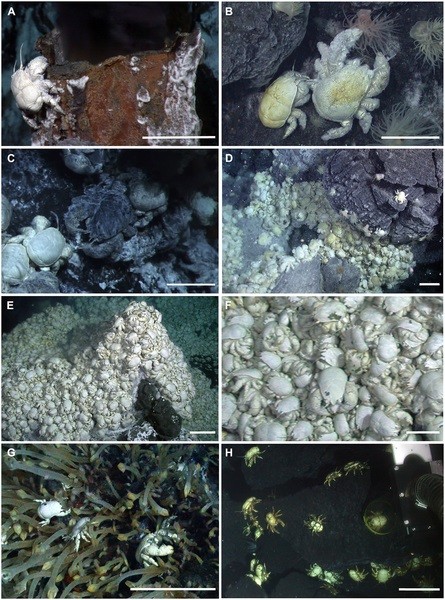There a few creatures in this world that can withstand scalding hot water found in hydrothermal vents under the Southern Ocean in the Antarctic where they subsist on tiny bacteria that thrives on their hairy chests.
Scientists have recently discovered a new species of tiny crab known as Kiwa tyleri where they first observed these creatures clinging beside underwater vents in the northeast of the Antarctic ocean peninsula. Now, scientists have officially named and described this unique crab in this new study.
Scientists have nicknamed this special crab as the "Hoff" crab named after the actor David Hasselhoff however, according to lead author of the study, Sven Thatje from the University of Southampton, the scientific name of this tiny crab apparently is in honor of deep sea biologist Paul Tyler.
This crab thrives in water that possesses temperatures of 95 to 104 degrees Fahrenheit however searching for this scorching water under the Antarctic sounds rather challenging. The tiny crabs strategy is to veer closer to hydrothermal vents under the ocean that can emit even hotter water of 715 degrees.
However due to the extreme temperatures of hot and cold from pressure of the vents and the surrounding frigid water, the temperature quickly drops The crabs must now play it by ear where if they get too close to the vents, they risk of getting burned but if they stay too far away, the frigid water can freeze them off.
The crabs now live in groups, huddling together where 700 of them can be found in one cluster in one square meter which is one third of a queen sized bed. Scientists have also discovered 4,000 of the tiny crabs clinging onto each other in a single square meter.
The Kiwa tyleri thrives by feeding upon mats of chemosynthetic bacteria that are originally found around the vent areas that are produced from oxidization of compounds that are ejected from the sea floor. They also feed off the micro organisms that live on their thick hairy coat covering their chests.
The crabs possess a hairy coat along with seven other similar species where they are collectively known as "yeti crabs". However, Thatje notes that the "Hoff crab" is still unique among all the other yeti crabs as further analysis reveals that they possess shorter and stouter legs and elongated spines on its front legs to allow themselves to climb vent chimneys.
This new study is published in PLOS ONE.


